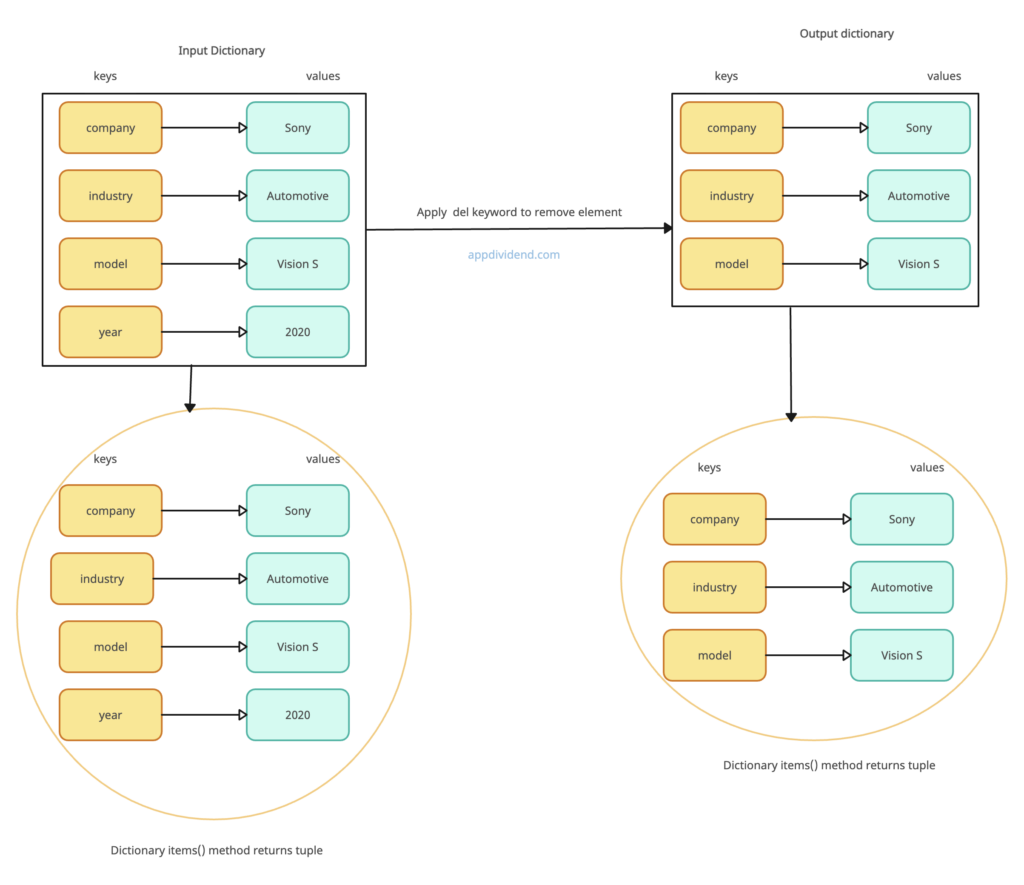Python Dictionary items() method “returns a view object that displays a list of dictionary’s (key, value) tuple pairs.”
Syntax
dictionary_name.items()
Parameters
The items() method does not take any argument; it just fetches the key and value using the items() method. Here, dictionary_name is the name of the Dictionary.
Return value
The items() method returns a view object of a list of the given dictionary’s (key and value) tuple pair.
Visual Representation
Example 1: How to Use dictionary items()
CES = {"company": "Sony",
"industry": "Automotive",
"model": "Vision S"
}
items = CES.items()
print('Dictionary items:', items)
Output
Dictionary items: dict_items([('company', 'Sony'),
('industry', 'Automotive'),
('model', 'Vision S')])
Example 2: How do items() work when modifying a dictionary?
CES = { "company": "Sony", "industry": "Automotive",
"model": "Vision S", "year": 2020 }
items = CES.items()
print('Original items:', items)
del[CES['year']]
print('Updated items:', items)
Output
Original items: dict_items([('company', 'Sony'),
('industry', 'Automotive'), ('model', 'Vision S'), ('year', 2020)])
Updated items: dict_items([('company', 'Sony'),
('industry', 'Automotive'), ('model', 'Vision S')])
That’s it.



